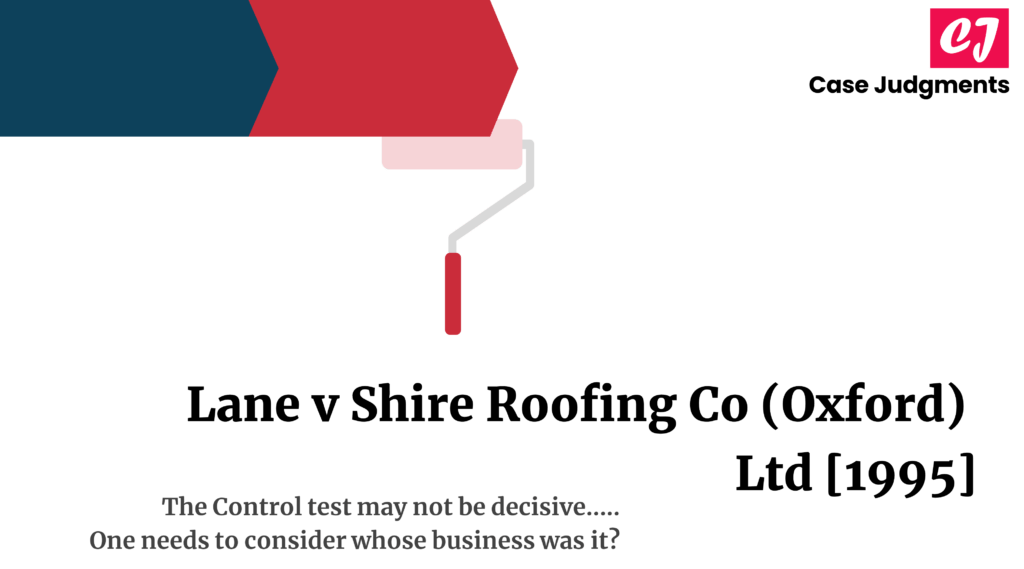
Case Summary of Hollis v Vabu Pty Ltd (2001)
Case name & citation: Hollis v Vabu Pty Ltd [2001] HCA 44; (2001) 181 ALR 263; (2001) 207 CLR 21
The concerned court: High Court of Australia
Decided on: 09 August 2001
The bench of judges: Gleeson CJ, Gaudron, McHugh, Gummow, Kirby, Hayne & Callinan JJ
Area of law: Employment status under labour law
What is the case about?
Hollis v Vabu (2001) is a famous Australian case on employment law. The nature of the employee-employer relationship was the primary focus of this case. The issue was whether the claimant was an employee or an independent contractor. Given below are the case details.
Facts of the case (Hollis v Vabu)
Vabu conducted business under the name of ‘Crisis Couriers’ and it had 20 to 30 bicycle and motorcycle couriers. In December of 1994, a pedestrian, Mr. Hollis was on his way out of a building where he had just picked up a parcel. After stepping onto the footpath, he was injured as a result of being knocked down by a cyclist who was wearing a jacket marked with the Crisis Couriers logo.
Mr. Hollis thus brought a claim against the company for damages. He claimed that the courier was working for the company and acting as its employee and agent when he was riding the bicycle.
Issue
Was the courier an employee? If yes, was Vabu vicariously liable?
Judgment of the Court in Hollis v Vabu
When determining the true nature of a relationship of employment in the past, control was the only factor that was taken into account. However, the High Court ruled that the totality of the relationship between the parties must be taken into account. This includes factors such as remuneration (including whether there are invoices, whether the contractor is registered for GST, and whether tax is being withheld), who decides the hours that the contractor will work, who provides the equipment, and so on.
Ultimately, the High Court, by majority, decided that the bicycle courier was an employee of Vabu, and as a result, Vabu was found to be vicariously liable for the act of the courier who knocked down Mr. Hollis.
Factors considered in the decision
The judges of the High Court issued a joint judgment in which they applied the multi-facet test. In this test, they not only considered the contractual terms that were in place between Vabu and the couriers, but they also investigated “the system which was operated thereunder and the work practices imposed by Vabu.” This was done in order to determine the entirety of the relationship that existed between the two parties.
The following factors were taken into account:
- the courier was not operating an independent business of his own
- the courier did not provide skilled labour or labour that required special qualifications
- the couriers did not have much say in the manner in which their work was performed
- the courier company had significant actual control over the activities of the couriers
- as a method of identification, the company uniform was required to be worn by the couriers, and they were presented to the general public and people who used the courier service as emanations of the company
- the company supplied the uniforms and radios that the couriers used to communicate with the company
- the company supervised the finances of the couriers, making deductions for unsubstantiated charges and for insurance, and fining the couriers when they caused damage to company property or failed to return it
- there was no room for the couriers to negotiate the rate of their remuneration
- the company decided when and how often couriers could take leave, and leave was not available during certain times of the year that were particularly busy, such as Christmas and Easter
The joint judgment presented the view that it couldn’t be said that the couriers were independent contractors simply because they owned their own bikes, bore the expense of running them, and supplied many of their own accessories. There was nothing contrary to the relationship of employment. This was even more so because the capital outlay was relatively small and because bicycles are not tools that are inherently capable of being used only for the courier/delivery work, but rather offer a means of personal transportation as well as a means of recreation outside of working hours.
List of references:
- https://htlp.com.au/wp-content/uploads/Hearsay-The-Legal-Podcast-Summary-E8-Martin.pdf
- https://www.qlrc.qld.gov.au/__data/assets/pdf_file/0008/372527/R56.pdf
You might also like:
More from labour law:

